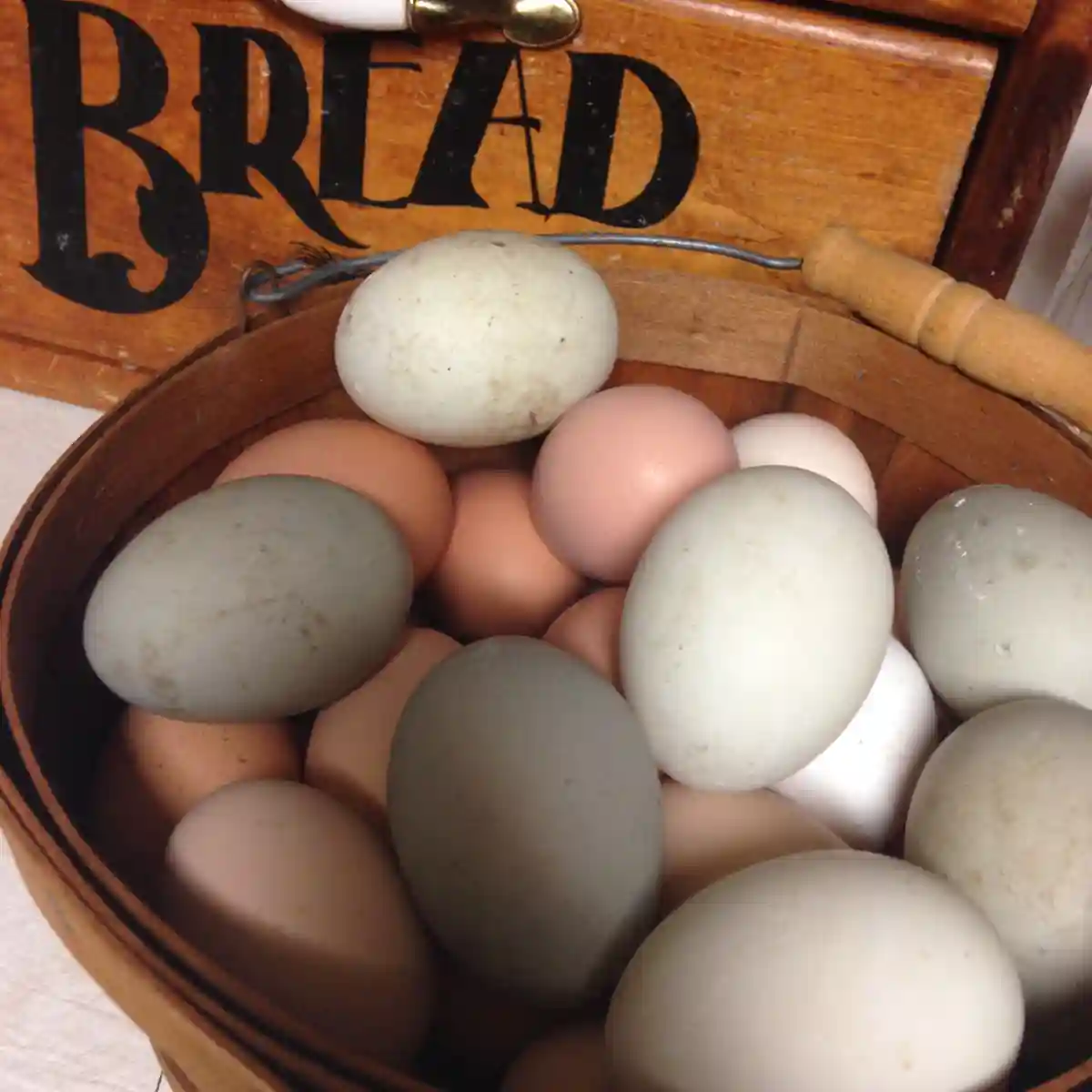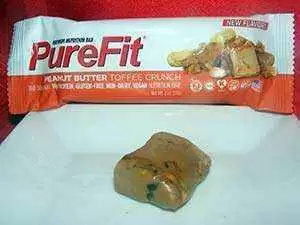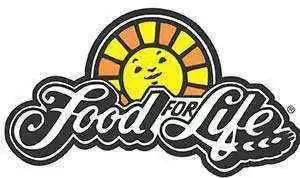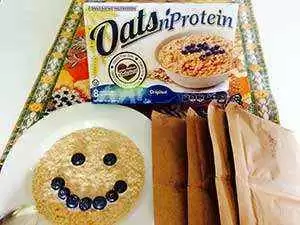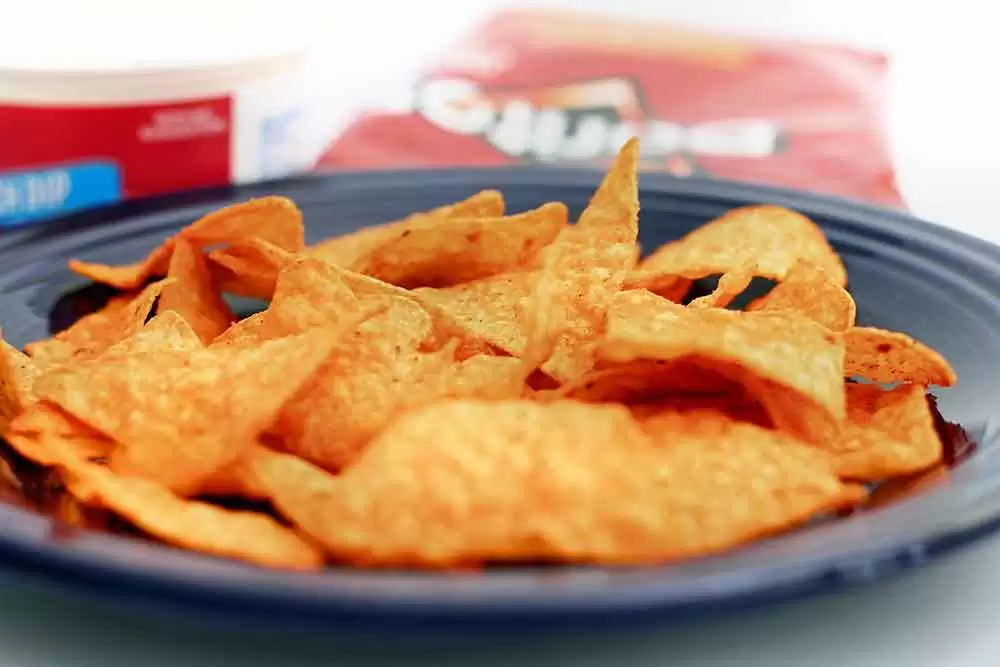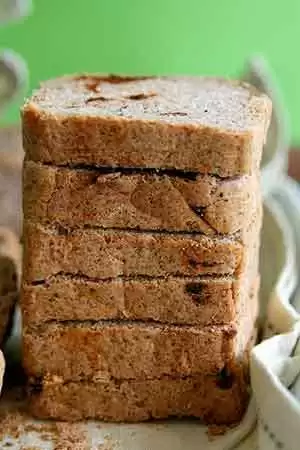-
Welcome to Celiac.com!
You have found your celiac tribe! Join us and ask questions in our forum, share your story, and connect with others.
-
Celiac.com Sponsor (A1):
Celiac.com Sponsor (A1-M):
-
Get Celiac.com Updates:Support Celiac.com!
Search the Community
Showing results for tags 'nutrition'.
-
Celiac.com 04/05/2023 - Over the past few years, the gluten-free food market has grown significantly. However, it is important to question whether these products are actually contributing to balanced diets. A recent study aimed to investigate the nutritional composition of various gluten-free products produced nine years apart. The study also compared the nutritional compositions of 104 gluten-free products currently marketed in Spain with their gluten-containing counterparts. The Researchers The study team included Claudia Mármol-Soler, Silvia Matias, Jonatan Miranda, Idoia Larretxi, María del Pilar Fernández-Gil, María Ángeles Bustamante, Itziar Churruca, Olaia Martínez, and Edurne Simón. They are variously affiliated with the Gluten Analysis Laboratory, Department of Pharmacy and Food Science, University of the Basque Country (UPV/EHU), 01006 Vitoria-Gasteiz, Spain; the GLUTEN3S Research Group, Department of Nutrition and Food Science, University of the Basque Country, 01006 Vitoria-Gasteiz, Spain, the Bioaraba, Nutrición y Seguridad Alimentaria, 01006 Vitoria-Gasteiz, Spain; and the Centro Integral de Atención a Mayores San Prudencio, 01006 Vitoria-Gasteiz, Spain. The Methods Three descriptive and comparative studies were done on gluten-free products. The first study compared the nutritional information panel (NIP) of 104 gluten-free products from 11 specific brands in 2013 against the same products currently available in 2022. The second study made a nutritional comparison between 104 currently available gluten-free products and their analogs with gluten. Both studies recorded NIP data and analyzed nutrient composition. The third study aimed to highlight the impact on nutritional value of a possible gluten-free product inclusion in a celiac diet by comparing a diet that includes gluten-free products and the same diet with gluten foodstuffs. The Findings Their research showed nutritional differences between gluten-free products produced in 2013 and 2022, particularly in the areas of cookies, breakfast cereals, doughs/puff pastries/pizzas, and breads. Additionally, the pasta group had significant decreases in energy, protein, simple carbohydrates, saturated lipids, dietary fiber, and salt. When comparing gluten-free and similar gluten-containing products in 2022, the major differences were found in protein and salt. This indicates that gluten-free products lead to a diet lower in protein and higher in salt and carbohydrates. Although there have been some improvements in the formulation of gluten-free products, the macronutrient profile still varies greatly, and gluten-free products cannot be considered nutritionally equivalent, let alone superior, to their gluten-containing counterparts. Basically, in many cases, the nutritional value of gluten-free products has gone down over the years. Because of this, celiacs need to update our knowledge, and learn more about the nutritional composition of the foods we eat, especially gluten-free products. This will help us to make better choices, and and to better manage our condition. As always, stay informed, choose carefully, and trust your gut. Read more in Foods 2022.
-
- composition
- diet
-
(and 4 more)
Tagged with:
-
Celiac.com 10/17/2023 - Teff is a grain widely cultivated in East Africa, especially Ethiopia. Teff is gluten-free, and gaining popularity globally due to its nutritional and antioxidant properties. In fact, teff has been called Ethiopia's "Gluten-Free Super Grain," but little research has been done on the properties of teff. A team of researchers recently set out to explore the antioxidant properties of teff grain extracts using a human cell model. The research team included Christopher J. Cotter, Allison J. Wright, Anastasia V. Romanov,Tyler N. Graf, Eric D. Whisnant, Laura Flores-Bocanegra, Megan S. Doldron, Nicholas H. Oberlies, Zhenquan Jia, and Ayalew Ligaba-Osena. They are variously affiliated with the Laboratory of Plant Molecular Biology and Biotechnology, Department of Biology, The University of North Carolina at Greensboro, Greensboro, NC 27412, USA; the Department of Chemistry and Biochemistry, The University of North Carolina at Greensboro, Greensboro, NC 27412, USA; and the Laboratory of Molecular Toxicology, Department of Biology, The University of North Carolina at Greensboro, Greensboro, NC 27412, USA. While teff has been found to possess antioxidant properties in previous laboratory studies, this research sought to validate its antioxidant activity using a physiologically relevant human cell model. The hypothesis was that teff grain extracts could influence the cellular antioxidant response by affecting the production of glutathione, a crucial antioxidant compound within cells. The study conducted experiments using a human acute monocytic leukemia cell line (THP-1) to assess the impact of purified teff grain extracts. The results indicated that the organic fraction of these extracts increased the cellular glutathione levels. This effect was more pronounced in brown-colored teff compared to the ivory variety. Furthermore, the brown-teff extract boosted the expression of genes involved in the glutathione biosynthetic pathway, such as γ-glutamate cysteine ligase catalytic (GCLC) and modifier (GCLM) subunits, as well as glutathione reductase, which is an enzyme crucial for glutathione production. This suggests that teff extracts may influence glutathione metabolism within cells. Mass spectrometry analysis revealed the presence of specific compounds in the brown-teff samples, such as 4-oxo-β-apo-13-carotenone, γ-linolenic acid (methyl ester), 4,4′-(2,3-dimethyl-1,4-butanediyl)bis-phenol, and (3β)-3-[[2-[4-(Acetylamino)phenoxy]acetyl]oxy]olean-12-en-28-oic acid. These compounds are believed to contribute to the antioxidant properties of teff by acting as direct antioxidants and influencing genes associated with antioxidant responses. Overall, teff exhibits antioxidant activity attributed to the presence of phytochemicals that can directly scavenge free radicals and regulate genes involved in antioxidant responses. This research, using a human cell model, provides valuable insights into tef's potential role in combating diseases triggered by oxidative stress. Importantly, it is the first report to demonstrate the antioxidant capabilities of teff extracts in a physiologically relevant context, opening doors for further exploration of its health benefits. Read more in Antioxidants 2023, 12(8), 1561
- 1 comment
-
- antioxidant
- gluten-free
-
(and 2 more)
Tagged with:
-
Celiac.com 09/30/2023 - Trying to improve the diet and quality of baked goods is something gluten-free bakers and consumers alike have been striving for years to achieve. With their high fat and protein content combined with many vitamins and minerals, duck eggs have helped to improve the gluten-free diet. So, what makes a duck egg more superior for gluten-free baking than a chicken egg? To discover the reason, let’s dive into duck egg nutrition to learn why. Protein and Fat The twelve grams of protein partnered with the eighteen grams of fat found in a single duck egg produces light, fluffy, moist baked goods that rise better and are more likely to hold their shape. If made with duck eggs, gluten-free baked goods have a consistency and taste similar to wheat-based baked goods. Duck eggs also make superb custards and curds, producing a more creamy and delicious consistency. Duck eggs are so superior in taste that many bakers and chefs only use them in their cuisine. Vitamins and Minerals Individuals following a gluten-free diet lack many beneficial vitamins and minerals that the human body needs to function. The reason for these deficiencies is the lack of wheat in the gluten-free diet. Wheat-based all-purpose flour has many essential vitamins and minerals that gluten-free flour lacks, including vitamins B9 and B12, and D, calcium, iron, magnesium, and zinc. While supplements can and should be taken to balance deficiencies, our bodies often respond best to receiving vitamins and minerals from our food. Eggs have long been known as “the perfect food,” as each egg contains all the nutrients the human body needs to survive, lacking only Vitamin C. So, it makes sense that eggs are an excellent choice to help our bodies replenish the vitamins and minerals we need. Duck eggs contain high amounts of calcium, copper, iron, manganese, magnesium, selenium, and zinc. They are an excellent source of vitamins B1, B2, B3, B5, B6, B7, B9, B12, and vitamin D. Whenever possible, it is best to include both duck and chicken eggs into your gluten-free menu to ensure a well-balanced diet. View a complete list of the nutrients found in duck versus chicken eggs. How To Use Duck Eggs Duck eggs are often used to replace chicken eggs in any recipe. You can even make scrambled duck eggs for breakfast, although some individuals find the stronger taste of a duck egg to lack appeal when eaten plain. Whether or not you like the taste of a deviled duck egg, using duck eggs in baking will not give baked goods an egg taste (except for cheesecake). Duck eggs are excellent for brownies, cakes, cookies, cupcakes, custards, meringues, muffins, and even gluten-free pancakes and bread. Duck eggs are considerably larger than chicken eggs, often requiring fewer eggs per recipe. As a general rule of thumb, use two duck eggs for every three large chicken eggs called for in a recipe. Allergy Friendly Duck eggs are more allergy-friendly than chicken eggs due to the different proteins found in duck versus chicken eggs. Most often, individuals allergic to chicken eggs can safely consume duck eggs and vice versa. However, this is not foolproof, and some individuals may have an allergic reaction to eggs of any species. ALWAYS check with your doctor or health care provider before making any dietary changes, especially if you have an egg allergen. Where to Purchase You probably have noticed that it’s much more common to find chicken eggs at your local supermarket than duck eggs. However, duck eggs are slowly becoming more popular due to the growing number of individuals suffering from egg allergies. The healthiest option is purchasing duck eggs from a local farm that sells free-range or pastured duck eggs. However, if you cannot gain access to farm fresh eggs, there are a few other options. Look for duck eggs at your local Whole Foods Market, farmers market, or health food store. You can also purchase duck eggs online from Metzer’s Farms or https://www.duckeggs.com. In conclusion, duck eggs make a superb addition to gluten-free baked goods and dishes. From cookies to bread and everything in between, duck eggs will turn your gluten-free baked goods sunny-side up!
-

Gluten-Free Diet Can Deprive Celiacs of Important Nutrients
Jefferson Adams posted an article in Latest Research
Celiac.com 04/03/2023 - People with celiac disease must follow a gluten-free diet for their entire lives in order to stay healthy. But, gluten-free foods are traditionally high in salt, sugar and fat, among other things. So, what's the impact of a gluten-free diet on the nutritional levels of people with celiac disease? A team of researchers recently looked at studies of adults and children with celiac disease who followed a gluten-free diet, to see if they were getting the proper nutrients in their diets. The Research Team The research team included Monica Gessaroli, Leonardo Frazzoni, Usama Sikandar, Gabriele Bronzetti, Andrea Pession, Rocco Maurizio Zagari, Lorenzo Fuccio & Maria Luisa Forchielli. They are variously affiliated with theDepartment of Medical and Surgical Sciences, University of Bologna, Bologna, Italy; the IRCCS Azienda Ospedaliero-Universitaria di Bologna, Bologna, Italy; the Department of Medical and Surgical Sciences, University of Bologna, Bologna, Italy; and the Health Sciences and Technologies Interdepartmental Center for Industrial Research (CIRI-SDV), University of Bologna, Bologna, Italy. The Gluten-Free Diet Nutritional Study The researchers searched through several databases for studies, conducted through October 2022, that looked at the nutrient intake of celiacs who followed a gluten-free diet. They used statistics to combine the results from different studies and see if there were any patterns. They found thirty-eight studies covering a total of 2,114 patients. On average, people with celiac disease on a gluten-free diet consumed 1,995 calories per day. Almost half of these calories came from carbohydrates, 16% from proteins, and 36% from fats. Teenagers consumed the most fats, while adults did not get enough dietary fiber. Calcium, magnesium, and iron intake was particularly low in teenagers, while vitamin D intake was low for all age groups. Conclusion In conclusion, people with celiac disease who follow a gluten-free diet may not get enough essential nutrients, and may consume too much fat. Since a gluten-free diet is a lifelong treatment, it is important to regularly check on people's nutrient intake to prevent other health problems, and to take supplements if needed. That means that people with celiac disease should work with their doctors to create a plan for monitoring their nutrition over time. Read more in European Journal of Clinical Nutrition- 7 comments
-
- celiac disease
- deficiencies
- (and 7 more)
-

Gluten-Free Diet Can Deprive Women of Crucial Nutrition
Jefferson Adams posted an article in Winter 2023 Issue
Celiac.com 02/22/2023 - When people with celiac disease consume wheat or gluten, they typically suffer damage to the lining of the small intestine, along with associated symptoms of the damage, including nutritional deficiencies. Most women with celiac disease follow a gluten-free diet. But, we still don't know very much about the potential long-term impact of a gluten-free diet on the nutritional, body composition, and other factors in women with celiac disease. To better understand the issue, a team of researchers took a closer look at this issue. The team studied a group of just over fifty adult Saudi females with celiac disease, all of whom had followed a gluten-free diet for more than one year. The study included a complete analysis of anthropometric data, levels of vitamins B12 and D, and a complete blood count. Even though it's a small study, the results are concerning. That's because all of the patients were deficient in micro and macro-nutrients, including vitamin D, folate, calcium, and iron. Moreover, nearly half of the patients had reduced total body fat, while nearly two out of three had decreased levels of visceral fat. We already know that most adult celiacs suffer from micronutrient deficiencies. We also have a good idea of which deficiencies are the most common. The team's findings echo those of earlier studies, which have shown that gluten-free foods often have poorer nutritional quality than similar non-gluten-free foods. This means that people with celiac disease who follow a gluten-free diet may be at risk for poor nutrition or malnutrition. To ensure proper nutrition for people with celiac disease, especially women, it's important to remain extra vigilant about getting food with enough nutrition, fiber, and other essential nutrients to promote good health. This may include working with a dietitian or nutritionist to create a well-balanced meal plan, and supplementing with vitamins and minerals, as needed. Women with celiac disease who are following a gluten-free diet, and those who care for them, should take this study seriously, share it with your doctor or nutritionist, and take steps to make sure they remain healthy. Read more in Nutrients- 1 comment
-
- celiac disease
- deficiency
- (and 6 more)
-
To all, This came up in another topic thread and I wanted to do some research on it......( and I couldn't find the thread easily) if some one knows where it is ......then by all means post it there too......it was about Calprotectin levels and IBS/IBD etc. I have been a big propent that the nutritional deficiency happens first then you have symptom's of the deficiency being diagnosed as inflammation and/or a disordered immune system and finally diagnosed as a genetic disease IE a Thiamine and Niacin deficiency leading to first NCGS and finally Celiac disease etc. But I am not just picking on one GI disease or the other......I think it is happening in many of the GI diseases......I call the alaphabet diseases... Like IBS, IBD, UC and Chrons etc... Well here is good research that showw the Calprotectin levels used to determine between IBS, IBD and/or Chrons disease is really just a Zinc Deficiency? Or that Is what I think it is according to this recent research? And I thought I would start a thread about it and see what others think about it. Entitled "The role of zinc in calprotectin expression in human myeloid (aka Red Blood) cells" https://pubmed.ncbi.nlm.nih.gov/29895358/#:~:text=While a role of zinc in the regulation,calprotectin (S100A8%2FS100A9 heterodimer) expression is so far missing. Where they note quoting "Our findings suggest that zinc (and its deficiency) does not only regulate the activity of calprotectin but also its expression by human myeloid cells." If you want to read the short (summarized form) of why Calprotecin is important in IBS and/or Chrons read this article. Entitled "The Use of Fecal Calprotectin in Inflammatory Bowel Disease" https://www.ncbi.nlm.nih.gov/pmc/articles/PMC5390326/ If you want to read the more technical and detailed reason(s) Calprotecin is used and why it can be a sign of a Zinc deficiency in IBS and/or Chrons then read this longer and more complex article. Entitled "Calprotectin: from biomarker to biological function" https://gut.bmj.com/content/70/10/1978 I hope this is helpful but it is not medical advice. Posterboy,
- 1 reply
-
- calprotectin
- celiac disease
-
(and 6 more)
Tagged with:
-

Extract from Nutrition Therapy by Stephen J. Gislason, MD
Scott Adams posted an article in Celiac Disease Basics
Foods derived from cereal grains (wheat, rye, barley, oats) are popular staples in our diet. In the past decade especially, a renewed enthusiasm for "whole grains", and increased dietary fiber, has lead to increased consumption of these cereals in relatively unrefined form, and often in combination, as with granola cereals, and whole wheat breads fortified with bran, coarse flours, and other additives. The argument in favor of whole grains is based on two considerations: 1) The nutrient content of whole grains and their unrefined flours is greater than refined flours. White flour has been considered by some an inferior food since it is missing some micro-nutrients. However white flours and light white bread are sometimes better tolerated than the whole grain foods. 2) The indigestible fiber in whole grains contributes to stool bulk, reduces the opportunity for constipation, and absorbs toxic or harmful molecules, which, escorted from the bowel by fiber, have less opportunity to do harm. The regulating and binding actions of grain fibber, it is argued, would reduce the incidence of bowel cancer, if eaten over a lifetime. The favorable fibers are probably better found in vegetables and fruit. While there favorable arguments for a high cereal grain intake there are major problems with these foods. Craving and compulsive eating of flour-based foods is common, especially the reward an dessert foods, containing sugar. These high-carbohydrate foods contribute the major caloric input to obese persons. The diseases clearly associated with Cereal grains or "Gluten intolerance" are the bowel disorders bearing the names,"celiac Disease", "Non-Tropical- Sprue", or "Gluten-Enteropathy", and the skin disorder, dermatitis herpetiformis. The clinical presentations of cereal-grain intolerance, which can be recognized from the history or pattern of illness alone include: Diarrhea, chronic with malabsorption, weight loss, micro-nutrient deficiencies, blood loss and anemia. Abdominal pain may be recurrent and associated with flutulence, distention, and intermittent bowel motility disturbance. Minor gluten-enteropathy may not involve diarrhea, and malabsorption may be inconspicuous or inconsistent. A nutritional anemia may be the presenting problem, although the patient will have an associated history of intermittent abdominal pain and distension. The anemia results from malabsorption iron, folic acid and/or vitamin B12. Arthritic or Fibrositic Syndromes: Aching, stiffness, and fatigue are three common symptoms which occur together in a variety of disorders, and occasionally remit completely on an elimination diet which excludes cereal-grains and other allergenic foods. Brain Disturbances: symptoms include deep, burning sensations in arms and legs, restless legs, numbness and tingling which comes on rapidly with sitting, squatting, and lying in bed; brain effects are manifest by a sense of confusion or "fuzzy-head, disorganization, irritability, and memory impairment. The occurrence of resting pain in joints, particularly the hands with slight swelling, and stiffness is the early prevention of rheumatoid arthritis; it can occur strictly as a manifestation of wheat (and other food) allergy. The activity of rheumatoid arthritis may be reduced in some patients by cereal grain and other allergenic food restriction. There are at least four mechanisms involved at the bowel level for gluten intolerance: 1) Lack of the digestive enzyme, intestinal glutaminase. 2) Antibody production to the prolamine, or a fragment of it. 3) Increased permeability of the bowel to macromolecules including the antigenic protein and its fragments. 4) Increased production and release of mediators such as histamine, seratonin, kinins, prostaglandins, and interleukins. A wheat gluten-triggered mechanism has been studied in rheumatoid arthritis patients. The clinical observation is that wheat ingestion is followed within hours by increased joint swelling and pain. Little and his colleagues studied the mechanism, as it developed sequentially, following gluten ingestion. Platelet Seratonin Release in Rheumatoid Arthritis: A study in Food Intolerant Patients. Little C. Stewart A.G., Fennesy M.R. Lancet 1983.297-9. The Gluten Proteins Gluten is a mixture of individual proteins, classified in two groups, the prolamines and the glutelins. The most troublesome component of Gluten is the Prolamine, Gliadin. It is Gliadin in wheat that causes the major problem in celiac disease, and Gliadin antibodies are most commonly found in the immune complexes, associated with major systemic disease (Unsworth, D.J., et. al., IgA Anti-Gliadin Antibodies in Celiac disease, Clin Exp Immunol. 1981: 46:286-93.Keiffer M, et. al., Wheat Gliadin Fractions and Other Cereal Antigens Reactive with Antibodies in the Sera of of Celiac Patients, Clin Exp Immunol. 1982;50:651-60). We eat the seeds of the grain plants. The seed has a bran casing, a starchy endosperm which contains 90 % of the protein, and a small germ nucleus which is the plant embryo, waiting to grow. Any flour made from the starchy endosperm contains prolamines and is potentially toxic to the grain intolerant person. If we look at the different grains we find that each has its own prolamine. The following list gives the type of prolamine each grain contains, and the percentage of protein the prolamine has in relationship to the entire grain: Wheat - Gliadin - 69% Rye - Secalinin - 30-50% Oats - Avenin - 16% Barley - Hordein - 46-52% Millet - Panicin - 40% Corn - Zien - 55% Rice - Orzenin- 5% Sorghum - Kafirin - 52% Celiac disease may serve as a model of wheat allergy. No-one should make the mistake of assuming this is the only form of wheat allergy. When wheat is the principle problem food, there is a consensus that barley, oats, and rye must be excluded as well. Millet, is intermediate in the list of offenders; corn and rice are usually tolerated when gluten prolamines are the chief and only food intolerance, although corn is a major food-allergen in its own right. Triticale is a new hybrid grain with the properties of wheat and rye, and is excluded on a gluten-free diet [bell L., Hoffer M., Recommendations for Foods of Questionable Acceptance for Patients with Celiac Disease,J.Can. Dietetic Ass'n: 1981; 42:2; 143-15]. The identity and the amount of the prolamine decides the kind of reaction that is likely to occur. It should be noted that there is considerable variability in the prolamine content of various foods made from cereal grains, and this variability is one of the many reasons why food reactions are not consistent. The usual definition of celiac disease links chronic diarrhea, with evidence of malabsorption, and changes in the surface of the small bowel. Most medical textbooks dogmatically state that an intestinal biopsy must be taken and must show typical changes before the diagnosis is made. The biopsy allows a pathologist to examine microscopically the surface of the small intestine. The surface of the small intestine is covered by a dense mat of projecting nipples called villi which shed cells containing digestive enzymes, and absorb food molecules. In long-standing celiac disease one expects the villi to be blunted and the surface to be smoothed out. While the biopsy is a useful procedure it has several drawbacks; It is a procedure with a small incidence of dangerous complication, especially bowel perforation. It is a small sample and may miss patchy or irregular bowel changes. Significant protein intolerance, and increased bowel porosity may exist despite normal appearance of the bowel lining under the microscope. Patients in remission or with intermittent symptoms may have normal biopsy results but remain exquisitely sensitive to some prolamine, or peptide fragment challenges. [bjarnson, I., et. al., Intestinal Permeability Defect in Celiac Disease, Lancet. 1983 1284-85]. The most significant test of gluten intolerance is remission of symptoms when grains are eliminated for a trial period of 3-6 weeks. I have often reviewed the history of patients with chronic diarrhea, and associated abnormalities, who have been "thoroughly investigated" in an academic center and left untreated because their biopsy result was normal. Physicians, who make therapeutic decisions solely on the basis of biopsy results are being dogmatic, not scientific, and certainly not serving the best interests of their patients who simply want to be better. Investigations which do not lead to effective therapy are of no value to patients. Diagnosis of gluten-sensitivity in all disorders may be facilitated in the near future by better immunological laboratory tests, including measurement of circulating serum antibodies directed against these proteins, and of circulating immune complexes which contain food antigens. [O'Farrelly, et. al., Alpha-Gliadin Antibody Levels: A Serological Test for Celiac Disease, 1983 Lancet; 286:2007-2010]. Better tests would permit the demonstration of increased GITPERM, and the entrance of abnormal macromolecules after test meals. Eventually the path through the body of such molecules may be studied by labeling them with isotopes, and tracking them with scanning methods like positron emission tomography. Irritable Bowel Syndrome An unexplained bowel disturbance, characterized by abdominal pain, gas, diarrhea, often alternating with constipation, is diagnosed as the "Irritable Bowel Syndrome" and too often attributed to "psychogenic causes". We recognize right away that the label "psychogenic causes" describes the lack of biological understanding more than it describes the patient's problem. The treatment usually offered includes bulk laxatives, tranquilizers mixed with antispasmodic drugs, and not infrequently, a trip to the psychiatrist, who is not likely to do a dietary history. The success rate with these methods in one study was only 12%! [Waller, S.L., Misiewicsz: Lancet 1969 ii: 753-6, Prognosis in Irritable Bowel Syndrome].Food studies are seldom undertaken in the assessment of patients with irritable bowel syndrome. Not a single patient whom I have seen with this disorder has had a food diary examined, nor any trial of exclusion diets. Dietary advice commonly-given includes "high-fibber" diets, usually increased cereal grains, which are contraindicated. Studies which allege to rule out food intolerance are poorly conducted, often basing negative results on limited, selected food challenges. Proper studies would utilize the complete methodology of diet revision therapy, and would observe patients in real-life conditions, ingesting real food over a significant period of time. The irritable bowel syndrome is at least in part a food-intolerance disorder, and the program outlined in this book will generally be helpful. In a recent study by V. Alum Jones et al, food intolerance was shown to be a major factor in causing the irritable bowel syndrome in 25 patients. This study is of particular interest because it was arranged to reveal something of the mechanism of this disorder. The results indicate that this particular presentation of food intolerance was not the result of immune events, was not associated with high blood-histamine levels, nor circulating immune complexes. Rather the disturbance seemed to be related to increased levels of Prostaglandin E2 (PGE2), synthesized and secreted by the bowel itself. Prostaglandin production is inhibited by ASA, and all of the other anti-arthritic medications, and may prevent the irritable bowel effect if taken before meals. The foods causing the irritable-bowel symptoms were (in order of frequency) Wheat...9 Corn .... 5 Milk.... 4 Coffee. 4 Tea..... 3 Citrus.. 2 All the patients found to be intolerant of wheat had normal results of intestinal biopsy. Not all wheat-induced bowel disorders are celiac disease! The important point, once again, is that the mechanisms of food intolerance are multiple and complex! The only practical way to study food intolerance is by trials of dietary revision, and challenges with real food. One interesting observation made by several of my patients is that they always got somewhat better while in hospital, having multiple tests done. Psychological factors? No. Hospital tests for gastrointestinal disorders always involve days of fasting. If you stop eating foods that are hurting you, your symptoms improve! Proper NP may avoid the waste, in terms of dollars and disappointment, that inappropriate medical investigation and treatment incurs, when a trial of appropriate DRT will often cure the "disease" under investigation. This not to deny that emotions influence bowel function, since this is clearly the case. The "Gut Brain Axis" has become a subject of specialized study because of the complexity of interaction of these two life-determining organ systems. Food selection, emotional experiences, and eating behaviors interact complexly. Anger, frustration, fear will profoundly influence food selection, appetite, digestion, and metabolism; while food selection, digestion and metabolism will determine your emotional reactivity. There is a continuous loop of causal relationships, not a one-way vector. When patients are told they have bowel dysfunction because of stress, tension, or anxiety, this is only a half truth. The other half of the truth is that patients have stress, tension, and anxiety because of bowel dysfunction. The more subjective mood-related symptoms are difficult to assess, and are attributed to "psychiatric causes" although no authority seems to know what that means! The brain effects are an expression of disorderly molecular flow through the brain. Specific nuero-active effects of grains include the circulating peptides, which have been described earlier in the book, as WMOD, and are further discussed in the last section of this chapter. Indications for Trial of Gluten Restriction NP advocates liberal gluten restrictions in a variety of circumstances, simply because the results are surprisingly good. The core diet developed by clinical trials, and described in subsequent chapters is initially free of cereal grains, since they are frequent offenders in food intolerance problems. Not only patients with bowel disorders benefit, but also people whose bowels function apparently well but suffer, fatigue, aching, swelling, and brain disturbances, expressed as mental and emotional upheavals. The specific patterns of disturbance which should invite a trial of the food-testing plan, and gluten restriction specifically are: Diarrhea, prolonged over three weeks, not associated with infections, or evidence of parasites or pathogenic bacteria in stool samples. Abdominal pain, especially if frequently recurrent, and associated with excess gas, and abdominal distensio (Irritable Bowel Syndrome). Anemia from iron, folic acid, or nutrient deficiency which is unexplained by blood loss, or dietary inadequacy, especially if associated with abdominal symptoms. Aching disorder, especially if the aching is generalized, associated with stiffness with inactivity, and dysethesiae ( odd burning, tingling sensations), and tender muscles. Any arthritic pattern, associated with diarrhea should be vigorously managed with gluten, milk, and egg restriction with careful testing of other foods for possible reactions. Fatigue, especially if associated with irritability, confusion or fuzzy-headedness, headache, and abdominal discomforts. Chronic asthma and rhinitis. Neurological symptoms which are unexplained by recognized abnormalities in physical examination and laboratory investigations. These symptoms include the above mentioned, memory disturbances, sleep disturbances, visual distortions, muscle weakness, and fasiculations (wiggly, jerking movements within muscles). A trial of gluten restriction is also appropriate in children with learning disability, schizophrenics, alcoholics, and patients with refractory mood disorders. Treatment of Grain Intolerance Exclusion of wheat, rye, barley, oats, and millet are the initial steps when gluten intolerance is suspected. The exclusion includes all the foods made with the flours of these common grains - Durham flour, Triticale, and Bugler are all excluded. The bran of these cereals is also excluded. A trial of an elimination diet lasting 3-6 weeks is sufficient to experience significant improvement in most bowel conditions. Longer periods of exclusion are required in conditions with chronic tissue inflammation, especially arthritis, and the skin disorders, eczema, and dermatitis herpetiformis, which sometimes requires an exclusion of several months before the skin condition remits completely. It is important to realize that multiple food intolerance are common and should be assumed, rather than assuming that single food intolerance's are the problem. NP does not consider it adequate therapy for a single food group to be eliminated, on the assumption that every other food will be well tolerated. Gluten restriction should be part of a more comprehensive dietary study, preferably in the form outlined in the food-testing plan. The best dietary plans are based on what is good to eat, more than what is bad to eat! No-one wants to be confronted with long lists of foods they must avoid. It is better to build a diet from scratch, emphasizing the positive. There is an entire universe of foods not related to milk, gluten-cereals, and eggs, the commonest problem foods! If improvement occurs, gluten restriction is maintained for many months at least before any effort is made to re-challenge with gluten foods. There are two exceptions, millet and oats. Millet is occasionally acceptable, early in an exclusion program although few people find it an attractive food, and it is potentially a trouble-maker. Oats is probably the best cereal to be re-introduced, and is often tolerated when wheat, rye, millet and barley are not. If gluten restriction is beneficial, oats may be tried after 2-3 months of abstinence. Some people, however, have specific and dramatic allergic reactions to oats, and acceptability must not be assumed. The major substitute for cereal grains is Rice The rice prolamine, orzenin, is different enough from gliadin to avoid immunological cross-reaction. Rice: Desirable Staple Food Rice is the staple food chosen for the core diet because it has low allergenicity, is versatile, widely available, and provides a carbohydrate caloric base to the diet. Rice comes in many varieties some of which are sufficiently different to be treated almost as separate foods. Converted white rice is preferred at the start of a core-diet program. Brown rice does contain more nutrients, and some prefer it by taste and texture; however, the husk also contains more potential problems. Rice-eating peoples generally polish their rice, removing the husk, because empirically the result is better. Again the nutritional arguments based on the nutrient content of foods outside of the body may be misleading! Brown rice may be well-tolerated, but should be introduced after tolerance for converted white rice is established. There are definite exceptions to this rule, as with all rules, since some patients do report better tolerance of selected varieties of brown rice. Rice can be utilized in a variety of forms, including rice cereals, rice pablum, puffed rice, rice-cakes, rice noodles, rice vermicelli, and rice flour (starch). Different rices vary sufficiently in taste, and texture to maintain culinary interest. Rice may be boiled with sunflower seeds, buckwheat, wild rice, other seeds, and legumes for added nutritional and culinary variety. All foods, including rice have the potential to be allergenic, however, and are not exempt from suspicion when adverse food reactions continue on a substitution diet. The most typical symptoms of rice intolerance are heavy fatigue, and chilliness. Rice may also produce the total grain syndrome, although this is uncommon in my experience. Following the core hypoallergenic diet plan, you will simply not miss cereal grains for a while, and find the variety and diversity of other vegetables, sufficient to sustain your interest and nutrition. The biggest challenge is to make the effort to choose different foods, and to prepare them attractively. Corn is less well tolerated than rice Our packaged, fast-food, and restaurant-food industries rely heavily on wheat flour to produce their products. The person on a gluten-free diet must make an extra effort to avoid these products, and to eat instead primary foods, including fresh produce, meats, fish, and rice. Most of my patients crave a carbohydrate food, if not a sugar food, then bread, buns, crackers, chips, nuts and so-on. Rice is a good alternative, being a starchy vegetable which turns sweet if you chew it for a while. Having rice available in a bowl in the refrigerator, mixed with vegetables, herbs, meats or fish offers an alternative to gluten-laden snack foods. Pasta is made with high gluten flour and is off our list of core diet foods. Again Rice is good alternative to pastas. Buckwheat Buckwheat is an interesting grain-like food to add to your diet, especially if Rice is not acceptable because of an adverse response to it. Buckwheat is not a grain, but belongs to the Polygonaceae family which includes sorrel, rhubarb and dock. Buckwheat is a seed, however, and resembles the grains in having a starchy endosperm, and can be ground into a flour, or cooked as a cereal, or prepared as rice. Buckwheat is not toxic to the celiac bowel, although some people react adversely to it. Buckwheat flour is disappointing for baking since it lacks gluten, the elastic, chewy component of bread. Other Alternatives to Cereal Grains Other starchy vegetables may stand in for grains. The potato is a starchy tuber, and potato starch can be used as a weak imitation of flour. Other roots are available, including Cassava an African vegetable which produces Arrowroot flour Tapioca is made by heating and moistening arrowroot. Flour is also made from Taro, a Japanese tuber, which is common in Hawaii where POI is a staple paste made from Taro roots. Soya beans are versatile and highly nutritious seeds which can be utilized as a flour as well. Tofu is the protein fraction of Soya beans, and is an inexpensive, nutritious food, used widely in the orient as a protein staple. It must be mixed with corn or another legume to produce a full complement of essential amino acids. The main problem with tofu is learning how to cook with it. Other legumes including, chick peas, lentils, peanuts are useful foods, on a gluten restricted diet, but have their own problems which must be considered before regular use of these foods is entertained. Each recommended food is still subject to testing, however, for each food may produce allergens or cause other problems. As with all foods in a sensitive person, the basic rule is - Find out how the food works in your body! Gluten-free diets specify food exclusions, including a variety of manufactured foods which contain Gluten. One generally can figure out what is not desirable by thinking of the probable origins of the food in question. Gluten exclusion does include malt, a barley product, and malt containing beverages (Postum, Ovaltine); beer and ale. Alcohol is usually excluded, although some tolerance may be found to selected wines, and distilled beverages. [Food for Celiacs; Campbell, J.A. : Journal of the Canadian Dietetic Ass'n., Jan '82 ; 43:1; 20-24; Gluten Free Cookbook: Leicht, L., RR#1 Box 54, Pender Island B.C. VON 2MO; Club House Foods 316 Rectory St. PO Box 788 London Ont. N6A 4Z2]. The focus of a gluten-free cookery is often on replacing gluten flour in baked goods with starches made from rice, arrowroot, potato, Soya beans, other legumes like chickpeas,and wheat starch (all the protein has been carefully removed). While baking can be done with these non-gluten "flours", the results are never as satisfying as with wheat flour. Gluten is the most desirable ingredient in flour for producing bread, and baked goods, and its absence is conspicuous. In many respects it is easier, kinder, and nutritionally wiser to forgo the baked goods in large measure and eat other foods. The task of changing your diet is very much like moving to another country and culture. You may try to bring all your old habits with you, and struggle to get all of the ingredients that you are used to forming into meals, or you can gracefully, and with a sense of adventure try the new cuisine. Certainly bakery foods are delicious and tempting, but so are creatively prepared rice, vegetable, fruit, fish, and meat meals. Even with multiple exclusions, an appealing, varied diet is within reach if you are willing to change your eating style. A book of recipes which de-emphasizes, cereal-grains, eggs, and milk is a great asset. The cookbook "Oriental Food Feasts" is full of recipe ideas from China, Japan, Indonesia, and India. One has to select recipes that utilize foods, appropriate to your dietary needs. The main thing is to be inspired to create and enjoy a new cuisine that will diminish your disturbances, sustain your interest in food, and provide balanced nutrition. [shepard, S.M., Oriental Food Feasts, Arco Publishing, Inc. New York 1979]. Vegetable selection and preparation is one of the prerequisites of a successful diet revision. The Tassajara cookbook is my favorite introduction to the subject [Tassajara Cooking; 1973 Zen Centre; San Francisco; Shambala Publications, Inc. Boulder, CO.] . Neuropsychiatry & Gluten Intolerance We have recognized that Gluten intolerance may involve the absorption of complete proteins like gliadin, or its peptide- fragments; anti-protein antibodies circulating in the blood, which form immune-complexes with the food protein, and provoke the release of mediators which may cause multiple disturbances in all body systems, and even tissue damage. These circulating problems may also influence brain function in a variety of undesirable ways. There is vague circumstantial evidence of an adverse grain effect on metal status. A family history of psychiatric problems is more common in patients with celiac disease. Celiac disease is genetically determined involving two or more concurrent genes. The genes involved are part of the immune-recognition complex, which determine the "Self" identity markers, protecting one's own cells from attack by the immune system. Celiac patients have an increased frequency of the serum histocomptability antigens (self-markers) of the HLA-B8 and HLA-Dw3 types. This genetic marker may indicate a predisposition for bowel absorption abnormalities or immunologic propensities, which result not only in celiac disease itself but other contingent abnormalities as well. Schizophrenia has been associated with gluten intolerance. The diagnosis, schizophrenia, describes a variety of differing individuals who belong to complex group of brain-disordered people. The schizophrenic brain distorts sensing, feeling, remembering, deciding, and acting. It is unlikely that schizophrenia is a single disease with a single cause. The milder, but similar brain dysfunctions which I observe commonly with gluten and other food intolerance, suggests that food allergy may play a role in schizophrenia, with gluten as a frequent triggering antigen. Dr. F.C.Dohan has consistently advocated a gluten-schizophrenia link for 20 years [Dohan, F.C., Cereals and Schizophrenia: Data and Hypothesis, 1966 Acta Psychiatr. Scand 42:125-42; Dohan, F.C. More, Celiac Disease as a Model for Schizophrenia, 1983 Biol. Psychiatry 18:561-4]. Dr. Dohan states: [" Many diseases are caused by genetically-deficient utilization of specific food substances. Perhaps the best studied example is phenyketonuria... far more common disorders, for example, atherosclerosis, and coronary heart disease, are strongly suspected of being due to genetically defective utilization of certain food constituents. " Similarly, considerable evidence indicates that the major cause of schizophrenia is the inborn inability to process certain digestion products of some food proteins, especially cereal grain glutens..."] Among Dr. Dohan's interesting an relevant recommendations is the idea of a "Gluten tolerance test". Such a test has not yet been developed, but is the sort of evaluation method that NP advocates in general. A gluten tolerance test could be initiated with routine evaluations before and after ingestion of grain foods. More sophisticated versions would measure gluten proteins and derived peptides in the blood, and would track the path of these molecules into organs, especially the brain. Finally the impact of these molecules would be evaluated by monitoring the function of the target organ in real time. I have been eager to do real-time monitoring of brain activity, topologically-computed in gluten-sensitive patients. These patients report changes in their PSYE, cognitive abilities, and emotional state which no researcher to date has documented objectively. The problem of adverse brain effects of molecules derived from food is a major under-recognized phenomenon of nutrition and molecular pathophysiology. Research in the next 10-20 years will, I am convinced, reveal a great deal about the extent, mechanisms, and importance of this consequence of eating to our mental status. Extracted from "Nutrition Therapy" by Stephen J. Gislason, MD -
Celiac.com 11/21/2014 - Some afternoons at work seem to go by slowly. The other day I decided to try a PureFit Nutrition Bar instead of my usual cup of coffee. Since I love peanut butter and nuts, I figured it would be good...and it was! This bar is chewy, sweet, and filling. About 10 minutes after eating it, I felt more alert and had no desire to continue snacking. I highly recommend these bars for their nutritional value and outstanding taste. PureFit has a loyal customer base and for good reason – these bars are delicious! For more info visit: www.purefit.com.
-
😔 I’ve been reading sooo much about celiac. Thank you ‘kitty kitty,’ as I really enjoy the links to published articles. But dang, I’m 49yr old, and I would say I’m quite ‘healthy’ all in all. But looking back over the years I’m so disappointed that my doctors failed to explore reasons for my ‘conditions’. I should not have had a dx of early osteoporosis in my 30’s! Why wouldn’t they look into finding an answer for my osteopenia, fatigue, depression, anemia, being so young ? I feel very let down. I’m realizing that I need to learn and take things into my own hands because the hands I was trusting, really don’t know. For fun I goggle how to become a registered nutritionist/dietitian. Even though I have a degree in nursing, I would have to start over, basically from scratch. Not that I want to achieve a new degree, but while reading, I learned physicians are not really even educated in this area. So basically, I probably know more about celiac today, than my MD. 😥
-
Celiac.com 06/07/2016 - The world of nutrition is currently obsessed with "super foods". Super foods are loosely defined as foods that are extremely high in nutrients – particularly antioxidants and vitamins – and which everyone is heartily advised to add to their diet. The problem with this approach is that, while focused firmly on nutrients, we are ignoring anti-nutrients! According to Wikipedia, an anti-nutrient is a compound in food that interferes with your absorption of other nutrients from a food. Most foods have varying amounts of anti-nutrients, toxins and other problematic compounds. A truly healthy diet will include weighing the good against the bad, while maintaining as much variety as possible. Once we have a clearer picture of how a food helps to support our nutrition, we can then decide how to include it in our diet and in what amount. Obviously, certain health conditions mean that certain foods are no longer healthful. For those with celiac disease, this means that grains with gluten in them are damaging to their health. It really doesn't matter how healthy wheat bran is for some – for celiacs, wheat bran is harmful. For those with allergies, you have a similar issue. Foods that may be healthy for some may not be for others. Another issue with food and health can be related to anti-nutrients. For instance, in the vegetarian world, we now hear more about phytate – often found in legumes – and how to reduce it in a plant-based diet. Salicylate is another anti-nutrient found in plant foods, and more people are finding that they need to consider this when choosing foods. Plants may also contain toxins, which are totally natural to the plant, but not good for you. Wikipedia indicates that a toxin is a substance that is directly poisonous, and capable of causing disease. For instance, some foods may contain naturally occurring cyanide compounds, or even arsenic in various forms. While we may not get enough to cause immediate problems, we certainly don't want to consume a lot of these toxins! Oxalate is another toxin present in many otherwise healthy foods. Oxalate poses many challenges for human health. It's a free radical. It promotes inflammation in your body. Because of its biochemistry, oxalate can be stored throughout your body, and can be particularly concentrated at the sites of previous injury, inflammation or surgery. Fundamentally, oxalate can be stored in tissues wherever the cells have taken it up. As a result, if you are someone who is absorbing too much oxalate from your diet, you can be contributing substantial stress to your body. Reducing the amount of oxalate in your diet cannot hurt you – you are reducing a totally non-nutritive substance for which the human body has no need and which contributes directly to health issues. However, reducing too many food types or nutrients in your diet can have negative impacts. The greater the variety in your diet, the better the chance that you are getting all your needed nutrients. The good news is that you can have a nutritious, high variety diet, and retain "super foods" in your diet which are high nutrition, gluten-free and low oxalate. Get Your Fiber The preponderance of processed foods in our diets can often leave us with hardly any fiber in our diet! Many gluten-free options are very low in fiber, and this can affect gut health. Fiber is not a direct nutrient for us per se – but it is a needed component that contributes to better gut flora and better health overall. Insoluble fiber adds bulk to the stool and promotes regularity. Most of us are not getting enough of this fiber, and as a result, can develop poor motility and constipation. Given that many whole grains are not good alternatives for those on a gluten-free diet, and the bran of many grains are actually high in oxalate, how can we get more healthy insoluble fiber? The good news is that one nutritional powerhouse is not only full of healthy insoluble fiber – it's also a plant source of Omega 3's. So a great solution to lack of insoluble fiber is flax seeds. Flax seeds can be eaten whole – but to really get the best benefits from this super food, it's best to grind your flax. Keep whole flax seeds in the freezer to preserve their freshness, and don't grind until just before using them. The recommended daily serving (which will also provide some soluble fiber) is two tablespoons. According to the Mayo Clinic, the right fiber goes much further than just regularity. If you increase soluble fiber, it can help reduce both blood sugar and cholesterol. Soluble fiber creates a gel-like material in the gut, and some research indicates that it may help to feed our gut bacteria. The benefits of soluble fiber are well known when it comes to cholesterol. The recommended food to get more soluble fiber is oats. However, whole oats are high in oxalate, and the oat bran has confusing test data. The solution? Psyllium! Pysllium is the medicinal ingredient in the popular product, Metamucil. Psyllium contains both soluble and insoluble fiber – and research on it shows that it can help to reduce cholesterol as well as normalize blood sugar. You can add it to baked products (but adjust the liquids), or sprinkle on foods. It's virtually tasteless – although you might find it does add some thickness or texture to liquids or foods. Fruits and vegetables are also good sources of both soluble and insoluble fiber and many are lower oxalate. Cabbages, lettuces, onions, cucumbers (with the skin) red bell peppers, orange, mango and grapes are all good low oxalate sources of fiber in your diet. Fruits There is no shortage of healthy options in fresh fruits that are also low oxalate, but the blueberry holds a special place among even the healthiest fruits. Research shows that blueberries are one of the most antioxidant rich foods available, and are included in most lists of super foods. Blueberries are one of the highest rated foods on the ORAC scale. The ORAC scale was developed by researchers at Tufts University, and is the measure of Oxygen Radical Absorbance Capacity (hence the abbreviation ORAC). What this really means for you is that the higher something ranks on the ORAC scale, the more antioxidants you are getting. Blueberries are stars on this scale, with an ORAC value of 4,669 per 100 grams, according to Superfoodly.com. Wild blueberries rank higher than cultivated ones – but you can't go wrong with any blueberry. Another fruit that ranks very high in ORAC is the lowly cranberry. While very tart (and difficult to eat raw), cranberries are second only to blueberries in antioxidant levels. To reduce the acidity of the fruit, and make them more palatable, cook with water and some honey. Cranberries are very easy to cook and make a lovely side dish for fattier meats like lamb. They aren't just for turkey anymore! Consuming these tangy fruits also help to contribute to bladder health. For nutrition on the go, turn to golden seedless raisins. While dark raisins are tasty treats, the golden seedless variety is both lower in oxalate and higher in antioxidants. In fact, golden seedless raisins actually have a higher ORAC score than fresh blueberries! Combine that with convenience and portability, and you have an easy way to get more antioxidants in your day. Raisins also make a great treat for kids, because of their sweetness. Is the apple a super food? Yes it is! Easy to purchase and pack for lunch, this popular fruit is full of quercetin, which protects cells from damage and is often recommended for those with allergies. Not only is it full of healthy antioxidants, it also has twice the fiber of other commonly eaten fruits, including peaches, grapes and grapefruit, according to the site EverydayHealth.com. Veggies When looking at veggies, many of the foods that are considered most healthy are also very high in oxalate. Everyone talks today about how healthy the sweet potato is for us: but did you know that a ½ cup of sweet potato can have over 90 mg of oxalate in it? For people trying to eat a low oxalate diet, a single serving would be more oxalate than they should consume in a whole day! However, while avoiding high oxalate foods, you do need to eat color and variety to get your needed nutrition. If you want a lower carbohydrate, orange veggie – consider the kabocha squash. Not only does this lower carb, low oxalate veggie work as a substitute for many recipes that require sweet potato, it also has a very good nutrient profile. Self Nutrition Data lists Vitamin A and Vitamin C as well as a good serving of Folate, in addition to good amounts of calcium, magnesium, phosphorus and potassium. Of course, you want other colors in your veggies as well – and green leafy veggies are particularly known for their nutrition. While spinach would be a bad choice because of extremely high oxalate, you have lots of other greens to choose from. Focus on lower oxalate varieties of kale, including purple kale. The website, The World's Healthiest Foods, lists kale as a food that can lower cholesterol (if steamed) as well as lower your risk of cancer. Of course, kale is part of the cruciferous vegetable family, and these foods have many anti-cancer benefits. Kale is an excellent source of Vitamin K (your blood clotting factor), as well as vitamin A, vitamin C, manganese, copper, B6 and others. Don't forget your other brassicas while you are focusing on kale! The cruciferous veggies also support our bodies natural detox processes, which is very valuable in today's world where we are exposed to many environmental toxins. Broccoli is another low oxalate brassica that is good for you, whether you are eating the mature broccoli heads, or feasting on broccoli sprouts. Note that broccoli sprouts do have an edge over their more mature cousins – they might just taste better, and given that they can be added to a sandwich for some satisfying crunch, might be easier to work into your daily diet. Research gives the sprouts a further edge in cancer risk reduction and some research indicates they may actually help to prevent stomach cancer. Another excellent leafy green is the lowly turnip green. Turnip greens are very high in calcium, and are even lower in oxalate than kale. A cup of cooked turnip greens will also get you more than 100% of the RDA for vitamin K. In addition, you'll get vitamin A, vitamin C, folate, copper, manganese, calcium, and vitamin E. Each serving will give you 15% of your daily requirement for B6. When thinking of deep red veggies, go for red cabbage. This versatile veggie is very low in oxalate, and that lovely red color means that it has even more protective phytonutrients, according to World's Healthiest Foods, than its green sibling! One serving of red cabbage delivers more than four times the polyphenols of green cabbage. Fats and Oils You can't read on super food nutrition anywhere and not run into the avocado. A great source of healthy monounsaturated fat, the avocado has also been linked to reduced risk of cancer, as well as lowered risk of heart disease and diabetes. While we think of avocados as a fatty food, they are actually a good source of fiber, with 11 to 17 grams of fiber per fruit! You'll also get a dose of lutein, an antioxidant recommended for eye health. Web MD says that lutein is a potent antioxidant, which is found in high concentrations in the eye. The combination of lutein and zeaxanthin (another antixodant) help to protect your eyes from damaging, high energy light. Some research indicates that a diet high in lutein and zeaxanthin may reduce the risk of cataracts by as much as 50%. Coconut oil is another excellent fat that can benefit our bodies in a host of ways. Doctor Oz lists a number of benefits, including supporting thyroid health and blood sugar control. This may be related to the form of saturated fat that is found in coconut oil, called lauric acid. Lauric acid is a medium-chain triglyceride. This kind of fat actually boosts immune system, and has antibiotic, antiviral and antifungal properties. It may also be a tool in your weight loss arsenal. A study in 2009 actually showed the eating 2 Tablespoons of coconut oil daily, allowed subjects to lose belly fat more effectively. Even better news for those who are following a low oxalate diet: both avocado oil and coconut oil have zero oxalate! Nuts, Seeds and Legumes Unfortunately, many foods in this category are high oxalate – and so won't qualify for our super food list. While you might be able to have a couple of walnut halves, or a similar amount of pecans, nuts are generally just to high to have in servings of more than 3-5 pieces. However, if you are looking for a superfood in this category, look no further than pumpkin seeds! Pumpkin seeds are an excellent source of vegetable-based protein, and are another portable food. A great snack for the health conscious can be made with raisins and pumpkin seeds – both are low oxalate, and the protein of the pumpkin seeds will help you to stay fuller longer. According to LiveStrong.com, a handful of pumpkin seeds will give you over 8 grams of protein. At the same time, pumpkin seeds are low in sugar, and provide you with fiber as part of the carbohydrate in them. You will also get vitamin A, vitamin B, vitamin K, thiamine, riboflavin, niacin, magnesium, calcium, iron, manganese, zinc, potassium, copper and phosphorus in that small and compact package! If pumpkin seeds don't qualify as a super food, it's hard to say what would! When it comes to legumes, many are stars for protein, but one of the best options is the red lentil. Lentils in general are easier to prepare than other types of legumes – they do not require the soaking and preparation time that many legumes do. At the same time, they are powerhouses of nutrition, with molybdenum, folate, fiber, copper, phosphorus and manganese all at more than 50% of your daily requirement. One cup of cooked lentils will also give you 36 % of your daily need for protein, according to World's Healthiest Foods. And all this nutrition is provided in a food that is virtually fat free and low in calories. You cannot go wrong! As an added benefit, some studies have found that eating high fiber foods like red lentils may reduce the risk of heart disease. The more fiber, the lower the risk of heart disease. Fish We are always hearing that we need to have more fish in our diets. It seems sometimes that not a week goes by when we are not hearing that we should be eating less meat, and getting less fat – with the suggestion that more fish would benefit us. When you think of the super food of fish, you have to think of salmon. Salmon is a fatty fish, and it's one of the best sources available for omega-3 fatty acids. In today's world of processed foods, omega-3's are one of the nutrients that we don't get enough of. Your best bet with salmon is to get wild-caught fish. Farmed salmon do not have the same nutrient profile, which may be related to the kind of food they are fed. Along with the decreased nutrient profile, studies have indicated that farmed salmon contains significantly higher concentrations of a number of contaminants (including PCBs, dieldrins, toxaphenes, dioxins and chlorinated pesticides) than wild caught salmon. World's Healthiest Foods states that a 4 ounce piece of Coho salmon will get you 55% of your daily requirements for omega-3 fats. On top of that, you'll get more than 50% of your daily requirement for vitamin B12, vitamin D, selenium, vitamin B3, protein and phosphorus, as well as other B vitamins and minerals. Omega-3 fatty acids will provide you a host of benefits, from reduction of inflammation, to better brain function. Omega-3 fat is also heart healthy, and can contribute to a reduced risk of heart attack, stroke, high blood pressure and other cardiovascular disease. Research indicates that eating salmon at least 2 to 3 times a week will give you the best benefits. Spice it up Spices can be a bit tricky, if you want to keep your oxalate low. Many spices – while tasty – are very high in oxalate! A great example of this is turmeric. A staple in most curry recipes, turmeric is extremely high oxalate – so while it has a reputation as a super food, it would not be a good choice if you are trying to keep your oxalate low. So what is your option if you love to eat foods spiced with turmeric? Well, the easiest approach is to stock your spice rack with a health food store supplement; cook with curcumin extract! While it may seem a bit odd at first, if you buy a curcumin extract (which is the extract from turmeric), you can get the flavor and leave the oxalate behind. While not technically a "food" when you cook with a supplement, you certainly get all the benefits of the original super food – turmeric – without the downside of oxalate. Another highly beneficial spice is cinnamon. Research clearly shows how helpful cinnamon is for managing blood sugar. However, ground cinnamon is an extremely high oxalate spice. So how can you get the flavor you want, while avoiding the oxalate? One solution is to cook with a cinnamon extract that you buy at the health food store! One brand known to be low oxalate is Doctor's Best. It is a dry extract in capsules – simply break open the capsules and use the contents in your dish. This allows you to get all the therapeutic benefits of the extract as well as the taste. You can also cook with essential oils and culinary oils – but use them carefully. Essential oils can be very strong and can irritate the tissues of the mouth and digestive tract. One drop of good quality essential cinnamon oil will replace as much as 1 tablespoon of ground cinnamon. Culinary oils are made for flavoring – follow the directions on the product that you buy. Either way, you will get the taste – and you avoid the oxalate. Enjoying Your Food! As with anyone who wants to eat a healthy diet full of super foods, the trick is to focus on the best nutrition, and get lots of variety. While some foods may not be as "super" as others, if you are making colorful meals, with healthful selections from across the spectrum, you'll be doing your body a favor with flavor! Where Does Oxalate Go? Once you have eaten oxalate, you have to excrete it through urine, feces or sweat. But what happens if you don't? A study on rats was able to trace where in the body a dose of oxalate remained. The scientists used a special carbon molecule – carbon 14 – in the oxalate they gave to the rats, so that they could find the oxalate wherever it went in the body. What they found is that if the oxalate was not excreted from the body, it was stored everywhere: 68% in the bones 9% in the spleen 8% in the adrenal glands 3% in the kidneys 3% in the liver 8% in the rest of the body These results are in direct opposition to conventional medical thinking, that oxalate only affects the kidneys. It clearly shows us that the whole body – but particularly the bones, key glands and detoxification organs – are all affected. This is another good reason to reduce the amount of oxalate in your diet! Is Spinach Really That Bad For You? A relatively simple study in the late 1930's looked at rats fed a diet that was only adequate in calcium. To bring the levels of calcium up, the rats were given spinach, equaling about 8% of their diet. While most of us think of spinach in terms of iron, it is also relatively high in calcium. The results of the study were shocking: 47. A high percentage of rats died between the age of 21 days and 90 days 48. The bones of the rats were extremely low in calcium (despite adding it to the diet through the spinach) 49. Tooth structure was poor and dentine of the teeth poorly calcified 50. For these animals, reproduction was impossible. Researchers concluded that not only did spinach not supply the needed calcium (because of the oxalate), but the spinach also rendered the calcium from other foods unavailable. What we know now is that oxalate is a mineral chelator – and rather than delivering minerals, it was robbing them from the rats. Getting Your Vitamin K Vitamin K is a very important nutrient. Life Extension indicates that new research from 2014 links vitamin K to longevity. In fact, the highest intakes of vitamin K reduced the likelihood of dying from any cause by 36%! So, you definitely want to get vitamin K in your diet. However, most of us think that we need to eat high oxalate greens – like spinach – in order to get good amounts of vitamin K. Nothing could be further from the truth! Kale, collards and turnip greens are all higher in vitamin K than spinach, and they have a fraction of the oxalate.
-
After countless hours of R&D, Food For Life is pleased to release the first available gluten-free breads, which are made from sprouted grains such as quinoa, millet and chia. It has become clear that many of the gluten free breads on the market today, while being "gluten-free", are simply not addressing the overall health needs of consumers. You see, gluten free breads lack the main all love in bread. They lack the one component that gives bread that familiar soft chewy texture. And, that component is gluten. Without Gluten, manufacturers are forced to use alternative ingredients that mimic the elasticity that gluten provides. And, many of them are choosing to feature egg, milk and refined starches today. However, in their quest to achieve even greater elasticity in an effort to win out on the soft and chewy test, consumers are seeing an ever expanding list of gluten free breads made from ingredients which you wouldn't expect in "natural" breads, some of which are sadly devoid of many nutrients. Yes, the race to replace gluten is getting to the point where it really needed to be addressed for the benefit of the gluten intolerant consumer. And, that is really the inspiration behind Food For Life's Sprouted For Life™ Gluten-Free Breads. Finally, a completely gluten free bread line in (4) varieties specifically created with your health in mind. Not only are they gluten free, but they are also vegan, and are made from incredibly nutritious ingredients like, sprouted quinoa, sprouted millet and hydrated chia seeds. Sprouted to maximize nutrition and digestibility. Available soon in the frozen section. With just one bite, you'll know they're a food for life! For more info visit our site.
-
Celiac.com 02/25/2021 - Numerous starch-based gluten-free breads are made with corn, potato starch and hydrocolloids, all of which are low in nutrients and devoid of health promoting compounds. These types of bread have some advantages. They are often shelf stable, and/or frozen. However, their poor nutritional qualities makes them less appealing to many consumers. One solution is to supplement such breads with pseudo-cereals, seeds, fruits and/or vegetables rich in nutritional components, especially antioxidants. Pulp from red fleshed (Magenta Love) and purple fleshed (Violetta) potatoes is high in dietary fiber, along with endogenous polyphenols, namely flavonoids, flavonols, phenolic acids and anthocyanins with high antioxidant potential. Because of these nutritional qualities, these potatoes offer tremendous potential for cheaply and easily fortifying starch-based gluten-free breads made with corn, potato starch and hydrocolloids. Recently, scientists at the University of Agriculture in Krakow (Poland) assessed the effects of various levels of freeze-dried pulp from red and purple potatoes on polyphenol, fiber, antioxidant and acrylamide content in the analyzed gluten-free breads containing the above potato pulp. They found that pulp from colored flesh potatoes is rich in pro-health compounds, especially fiber and polyphenols. The pulp can be used to fortify gluten-free bread with phenolic compounds and fiber, without reducing favorable properties, such as crumb elasticity, porosity, taste and smell. Gluten-free bread fortified with 7.5% freeze-dried Magenta Love red potato pulp was high in phenolic compounds, dietary fiber, and antioxidant activity, coupled with low levels of potentially dangerous acrylamide and good physical and sensory qualities. Their team recommends that manufacturers consider using the 7.5% mix for large scale gluten-free bread production. Since nutritional deficiencies are common in people with celiac disease, improving the nutritional profile of gluten-free breads that are typically made with corn, potato starch and hydrocolloids would be beneficial to numerous people. Read more in PLoSONE 15(9):e0229841.
- 2 comments
-
- better
- gluten-free bread
-
(and 3 more)
Tagged with:
-
Genetics Nutrition and Stress the Threeway Model of How Gluten Triggers an Immune Reaction in Severely Malnourished IE Vitamin Deficient Individuals consuming a High Calorie Diet This blog post is WTL again....I tried breaking it into to two Posterboy Blog posts but decided to go ahead.... And post it instead as one due to other things IRL that are taking up most of my time these days..... So thanks in advance to every one who actually completes it! I truly believe it will help everyone who reads it and UNDERSTANDS! This Posterboy blog post is for everyone who got lost in the “Forest of Data” and never found their way out! As I am fond of saying “To Educate is to truly free!” Where there is a free exchange of knowledge there is health and peace for one’s soul and body! The journey of a thousand miles begins with the first step….that step back to health for me was my seemingly rare and not well understood Celiac disease diagnosis… I then began my journey….to learn at least what the doctor’s knew about this diagnosis….and exceed it if I could… But I got lost in the forest of data….for years…going around in circles…or so it seemed at the time… See my first attempt to hack/machete my way out of this sad forest (of illness) I was in… https://www.celiac.com/celiac-disease/a-differential-diagnosis-how-pellagra-can-be-confused-with-celiac-disease-r3989/ But I soon learned to spot clues as I read more and more studies….trends, patterns…in the data begin to emerge… one tree (study) at a time…I was able to blaze a trail back out of the forest… I can honestly say I am out of the forest now….and by blazing this trail….I hope I have left enough markers (IE posterboy blog posts/articles etc.) to help the next person out of this forest of symptom’s….. I had over focused on every shiny thing I found (individual Vitamin Deficiency one tree at a time)…. I begin to identify each Vitamin (tree of health) in this vast forest… I had settled on the 3 alarm fire of Pellagra….I didn’t know how wrong and right I was at the same time… It would take years to figure this out (as I walked around in circles)….it is what others had concluded before… The IJCD had concluded the same thing a couple years earlier… http://pubs.sciepub.com/ijcd/3/1/6/ They confirmed for me…it was possible… They noted: on how Pellagra occurred in Celiac disease… Pellagra and celiac disease “The two diseases can be connected in two aspects. 58% of pellagra patients were shown to have malabsorption and many had intestinal pathology on biopsies [36, 37]. Alternatively, Pellagra was described in celiac disease [38]. The skin manifestations in pellagra might have some additional etiologies, since multiple nutrient deficiencies are at the origin of the cutaneous manifestations in celiac disease. The following nutritional deficiencies inducing skin rashes, were describe in celiac disease: Zinc, Iron, Vitamin A, E, B12, niacin, folate, selenium and essential fatty acids [39, 40].” So Eureka! I had found what was being misdiagnosed as Celiac disease instead… 58% was good….I was more than halfway there….being right and wrong all at the same time! Then I found that there was another disease that explained these connections even better! https://www.celiac.com/celiac-disease/how-low-thiamine-can-thin-villi-old-research-rediscovered-and-its-clinical-significance-in-celiac-disease-r5100/ Now I had found out what was really causing my problems! I thought…and once again I was right and wrong all at the same time…. While my aim was dead on….it was nutrients (or lack thereof more correctly) causing my health problems… I had become too myopic only seeing individual trees and the not the forest ….for what it was a healthy place to live and thrive and fruit for meat and leaves for medicine… It was all the trees (at least 3 in particular)….together forming a Web of Life… To pivot from the metaphor to hard science (in real life aka IRL) ….how do know this analogy is true….or truer than not! To see if this is true we have to dig deep in the forest of data….and see what it tells us… See this research entitled “Pellagra in the USA: unusual manifestations of a rare entity” https://casereports.bmj.com/content/12/9/e230972 On the surface….it is just as we would suspect…Pellagra is rare in the USA…right only in Alcoholic’s right…. But we if we dig a little deeper….we learn something from this good research… Quoting from their abstract… “They/She had adrenal function testing which revealed adrenal insufficiency. Vitamin testing revealed normal B12 and folate levels but undetectable levels of thiamine, riboflavin and niacin. Her symptoms and signs resolved entirely with appropriate vitamin supplementation. Niacin (vitamin B3) is essential for multiple metabolic pathways, and severe deficiency may cause clinical syndrome of pellagra, which is most commonly associated with diarrhoea, delirium and dermatitis.” Notice the bolded Vitamin Deficiencie(S)….not one deficiency but many deficiencies culminating the a “Capstone” disease diagnosis…. Now why did this researcher not say the patient had Beri Beri (B1 deficiency), or Pellagra Sine Pellagra (B2 deficiency) instead…they/she had ALL these deficiencies…. Because B-Vitamins don’t occur alone or uncomplicated….so I was right to say I had gone on to develop (mostly) Pellagra ….except I didn’t have Skin (dermatitis) problems like DH etc….so I had only developed Pellagra Sine Pellagra instead…(so far)… But I had already gone on to develop Thiamine deficiency aka Beri Beri and the doctor’s had already missed it…. So why should I be surprised they missed me having a Riboflavin deficiency too! What most people don’t know (even doctor’s) don’t realize today….and I have recently found out that Pellagra has been incorporated into Celiac disease today….. Celiac disease is a three alarm metabolic (deficiency syndrome/disease) ramped up by each B-Vitamin you become low in …..in time…. It is a Cascade….like falling domino’s….one falling triggers the others too fall as well… Let’s see if there is research to backup this claim…. See this research published before 1950 (15+ years) before DH was associated with Celiac disease…. https://www.jidonline.org/article/S0022-202X(15)50482-X/pdf They show that DH was successfully being treated with Nictonic Acid aka Niacin more than 15 years before DH was described in the Skin of Celiac patients… Quoting from their summary “In a series of 12 patients with dermatitis herpetiformis of various degrees of severity, the oral administration of niacin in doses of 50 to 200 mgm. four times daily relieved the pruritus (Itching) and improved the cutaneous manifestations.” Yet today we exclusively “see” through50+ years of error(s)…having forgotten that DH can be treated with Niacin…. thus confirming a Pellagra diagnosis in a Celiac patient… It is the third phase (3 alarm stage) of the Vitamin Deficiencies you have now developed…. Don’t be surprised if the doctor’s don’t see your Vitamin Deficiency even then… Because in classic genetics….the environment and nutrition is discounted as limited factors….in disease… But other researchers are now rejecting this myopic view realizing Environment (Viruses etc.) and Deficiencies IE (Vitamins and Minerals) ALSO play a part in the pathogenesis of disease in an equal 50/50 mix…. See this 2 year old research that summarizes such an hypothesis entitled… Reovirus infection triggers inflammatory responses to dietary antigens and development of celiac disease Here is the link…to this seminal and groundbreaking research… https://science.sciencemag.org/content/356/6333/44 /tab-e-letters Where Doctor Leslie M. Klevay , Prof. Emeritus, Department of Internal Medicine University of North Dakota School of Medicine and Health Sciences says quoting “In the original classification scheme, Celiac disease would have been considered a toxic deficiency (3) similar to Wernicke’s encephalopathy in which excessive ingestion of ethanol induces thiamine deficiency. Now some celiac disease can be considered a three-way cooperation among an infection, a toxin and a deficiency. Other three- and four-way cooperations have been identified.” Here is longer and probably better description how Virus's (Environment) or IE Epigenetics could/can trigger an Genetic disease like Celiac disease... https://www.gutmicrobiotaforhealth.com/virus-may-lead-celiac-disease-disruption-intestinal-immune-homeostasis/ The research is a couple years old.....also the Epstein Barr Virus has also been associated with Celiac disease. Dr. Londsdale says we need a “new Model” for Medicine… https://www.hormonesmatter.com/new-model-medicine/ I say we need a better one that acknowledges the environment and deficiencies as important or as important as genetics…. Other researchers have noticed the same thing….your environment and deficiencies are not being taken into account for Celiac’s. See this recent research that says the same thing entitled “Genetic risk factors for disease can be affected by environment” https://www.upi.com/Health_News/2017/08/16/Genetic-risk-factors-for-disease-can-be-affected-by-environment/4251502820421/ Not only are genetic risk factors for Celiac disease being affected by your environment…. they are effected by your deficiencies like Thiamine, Riboflavin and Niacin…. We know this because they have been studied (these three B-Vitamins) for toxic overload in Sepsis…. where the Auto-immune system goes haywire and results in death… See this research in Rats https://pubmed.ncbi.nlm.nih.gov/30903555/ It will take a few years for this study to be confirmed in humans….while more studies are performed more people will be dying of Vitamin Deficiencies…. Despite 8+ years ago Riboflavin has been proven to treat (MADD) disorder resulting in acute Renal Failure…. https://www.jstage.jst.go.jp/article/internalmedicine/50/21/50_21_2663/_pdf/-char/en People still think it is 70/30 genetics or even 80/20 genetics… Recent research for Celiac disease proves it is no more than 50/50 percent Genetics/Environment IE (Vitamins deficiency etc. AKA malnutrition) It is my hope that clinical practice will quickly catchup with the newest/latest research proving DNA/Genetics usually has less than 50pct of the risk factors for Celiac disease and accept many Vitamin deficiencies are prevalent as co-morbidities and need to be addressed before a Valid Celiac diagnosis can be accepted/confirmed…. See this studied that confirms this in Celiac’s https://www.genengnews.com/news/dna-has-relatively-little-say-in-disease-risk-usually/ Where they say quoting “It is becoming increasingly clear,” explained Wishart, “that the risks for getting most diseases arise from your metabolism, your environment, your lifestyle, or your exposure to various kinds of nutrients, chemicals, bacteria, or viruses.” And though Celiac disease is a disease consider to have a higher genetic factor it is now believed to be no more than 50% of the risk factor …..as once commonly believed… quoting again “There are diseases, however, for which the genetic contribution is about 40–50%. These diseases include Crohn’s disease, Celiac disease, and macular degeneration.” But I don’t believe they (doctor’s/Clinicians) will……memory has a “longtail” of approximately 18 years from new research reaching clinical practice on average… Appropriate supplementation is consider a key part of “Aftercare” for Celiac’s ….it needs to be part of appropriate disease diagnosis (IMHO)….so you don’t continue to suffer from the avoidable and treatable diseases that often in as many as 80pct of patients are found out Post-Mortem….as is the case in Wernicke Encephalopathy (WE)… etc.…and it should be NOTED 80% of WE is not diagnosed in Alcoholics….. it is happening in Celiac’s today and/or passed off as other GI diseases like Chrons, IBS, UC etc. and psychiatric or neurogenerative diseases today…. https://www.hormonesmatter.com/beriberi-the-great-imitator/ see this current research on Thiamine Deficiency and Benfotiamine Therapy in Brain Diseases https://biomedgrid.com/fulltext/volume3/thiamine-deficiency-and-benfotiamine-therapy-in-brain-diseases.000621.php You will fell half-dead if you continue to have these deficiencies if they doctor don’t also treat you for these co-morbidities despite being on a gluten free diet! I know I did….Ignorance kills!....but It maims us first! I hope this is helpful but it is not medical advice…. Posterboy by the Grace of God At this point I am only making one Posterboy blog post....see following/below for more technical studies...... Showing how and why this is true and how the doctor's missed it! Note to Self::::::))))) Put this a Part 1 of the Blog post and then link the Smoking Gun research on Tryptophan… ADDENDUM IF this analysis is true and a good working Theory and not just a good hypothesis we would find research that shows Tryptophan is important in the pathogenesis of Celiac disease and new research in 2020 confirmed this analysis. Celiac.com ran a summary of the research but I will link a good synopsis for others to read for themselves showing how Celiac’s have impaired metabolism of Tryptophan. https://www.celiac.com/celiac-disease/tryptophan-in-turkey-meat-can-speed-gut-healing-in-celiac-disease-r5338/ This good synopsis of this working theory shows how Tryptophan speeds gut healing in Celiac IMHO proving Pellagra is happening in Celiac’s. I would recommend reading it ALL when you get a chance. https://www.gutmicrobiotaforhealth.com/gut-microbes-in-celiac-disease-show-impaired-metabolism-of-dietary-tryptophan-according-to-researchers-at-mcmaster-university/ And like most “All” good medical research….they always conclude “more research/study” is needed…. Well people can’t want another 10 or 15 years until this research is again confirmed (and again) See this research entitled “Kynurenine pathway metabolites in humans: disease and healthy States” https://pubmed.ncbi.nlm.nih.gov/22084578/ This connection was established at least 10+ years ago….and now we can say for SURE IMHO that this metabolic breakdown is triggering inflammation in Celiac’s leading, in time, to a Leaky Gut! Again, I want to say (make note) that the International Journal of Celiac disease aka IJCD first noticed this connection 5 years ago…will it take another 10 or 15 years before it is “accepted” medical research??? I hope not: but I AM honestly not encouraged!!! This was meant to be a 2 part blog post….so It doesn’t get too long and too technical…but I have decided to publish it all at once now that I am working through some other health issues at the moment! If this is true….there should be studies about these facts….and there is…. I have argued IT is ONE immune system with multiple presentations of the difference Phases of Vitamin Deficiencies…. We see how this works in the LUPUS Inflammation Model I wrote a Posterboy blog post about these connections…. https://www.celiac.com/blogs/entry/2709-the-lupus-inflammation-model-for-sickness-beginning-with-b-vitamin-deficiencies-in-celiacs-and-other-inflammation-triggered-diseases…/ Here is the recent research it is based on…describing how IL-2 and IL-6 combine to help control the immune system…. We see this Alcoholic’s too…in how Niacin can help Leaky guts… See this Celiac.com thread about this topic… https://www.celiac.com/forums/topic/126496-intestional-permability-could-a-vitamin-deficiency-cause-it/?tab=comments#comment-1009633 And that is exactly what we want to fix in Celiac’s right….well B-Vitamins do that! And we see B-Vitamins are low in other chronic inflammation GI diseases like IBS, Chron’s and UC…because there is ONE Immune System! See this research entitled “Blood Concentrations and Renal Clearance of Water-Soluble Vitamins in Outpatients With Ulcerative Colitis” https://pubmed.ncbi.nlm.nih.gov/30906550/ Quoting “The blood concentrations of vitamins B2, C, niacin and folate were markedly lower in the patients with UC than those in the control group, and the renal clearance of vitamins B1, B6, B12 and folate was notably higher in the UC cohort. It was concluded that vitamins B2, C, niacin and folate were at significantly lower concentrations in patients with UC following adjustment for coexisting factors. The lower levels of niacin may be partially due to impaired reabsorption. Chronic inflammation, common in patients with(my words and/or chrons, IBS etc. and Celiac disease), with UC may contribute to the lower levels of other vitamins by rendering amino acid and carbohydrate metabolism into a hypermetabolic state. As the role of vitamins in metabolic activity is constant and pervasive, nutritional management including the application of water-soluble vitamins appears important for patients suffering from UC.” It is me again….why wouldn’t we think this would be the same in Celiac’s…..and why I believe the new research that shows Tryptophan helps heal Celiac Villi is key to understanding/proving Celiac is Pellagra in disguise in the 21st Century! It is time testing is done to confirm these same B-Vitamin deficiencies in Celiac’s is all I am saying so the Co-morbidities can be treated…leaving a true diagnosis… If not the same Vitamin Deficiencies could be confused for Celiac and you will never be sure if you ever received the proper diagnosis…. I have had to figure this out on my own….this is written so you won’t have t o suffer like I did for year’s going undiagnosed despite a Celiac diagnosis…. Two front wars are rarely winnable. Disguise is a great trick of the enemy. For if you get the wrong diagnosis then the symptom’s never getting better and the battle/war rages on. But What If you have the wrong disease? Would you get better? This is dedicated to those still suffering who are willing to ask why? am I still suffering GI symptom’s on a Gluten free diet? Since (auto-immune) or disease in general rarely occur alone it only makes sense to tackle the easiest one’s first. There are two camps/type of people. (It is true in many things of life). Supplementing or not to supplement is the 64K dollar question. The one’s who believes in supplementing readily attack the front (symptom’s) on/from whatever artillery (vitamins and minerals) they can find to shore up their defenses. The other camp prefers to hunker/bunker down and wait for reinforcement/symptom’s to get better and the battle/siege to pass. But in war there is an old saying. “A city besieged is a city taken”. I know there is a lot of confusion out there. … I have been YOU! I am just trying to help those who are still suffering (losing the war). For a battle the war was lost. And many battles’ are lost from confusion…. Knowledge is power …..know you have to power to move forward! It is been said Doctor’s miss Celiac’s in 90% of their patients… https://www.celiac.com/articles/24919/1/Are-Doctors-Missing-90-of-Celiac-Disease-Cases/Page1.html It is equally true about how often Vitamin Deficiency are missed in Celiac’s… “How could this be? One reason is that even classic Celiac disease symptom, such as abdominal pain, bloating, gas, diarrhea, anemia and weight losscan mimic other conditions. Less classic symptoms such as fatigue, low vitamin C, D and calcium levels can be misleading.” Lupus is known as the great imitator disease. And Celiac or is it Pellagra could be called the same in 87% of cases if you are lucky. And so is Beri Beri… https://www.hormonesmatter.com/beriberi-the-great-imitator/ Imitation is the sincerest form of flattery — Unless it is medicine then it is the unkindest cut. . . How do we know this is true…we can predict that Pellagra would develop in Sorgen’s disease aka SLE or LUPUS and it does…where they ask how confident are you of your diagnosis…explaining DH in detail (IF) you did not know it also described Pellagra instead (Rough Skin)… https://www.dermatologyadvisor.com/home/decision-support-in-medicine/dermatology/pellagra/ Dermatology doctor’s get it because a Niacin deficiency is 90% classically described as a skin disorder first and foremost…. But Beri Beri and Pellagra GI’s problems are a forme fustre of WE’s….FIRST a Thiamine deficiency and finally a Niacin deficiency when it present’s as DH today! See this research that explains how the first signs of these Vitamin Deficiencies are GI related… .entitled“Gastrointestinal Beriberi: A Forme Fruste of Wernicke's Encephalopathy?” https://pubmed.ncbi.nlm.nih.gov/29982183/ I can only hope what I have shared here has lifted the tide of knowledge a little and your boat/that has been lifted enough for you to freely sail again. Learn from my mistakes! No body is so dumb who won’t learn from other people’s mistakes! A valid I dare say standard “process” of modern/good medicine is the differential diagnosis. If it is not the doctor has not done justice for you or YOU for yourself . … A “differential diagnosis” makes more sense. They have not done YOU justice. Isn’t that what we all want – to know just what we need to do to get better that is justice/peace and good medicine. We are our own best advocate! I share that other’s may know to look for these Vitamin Deficiencies if you too received a Celiac diagnosis and the Doctor’s don’t “See” it in your face….like those of nearly 70 years ago who were treated for DH by Niacin(amide)…… 15+ years before DH was ever linked to Celiac disease Remember **** This is not medical advice and should not be considered such. Results may vary. Always consult your doctor before making any changes to your regimen. 2 Timothy 2: 7 “Consider what I say; and the Lord give thee understanding in all things” this included. As I am fond of saying “To Educate is to truly free!” Where there is a free exchange of knowledge there is health and peace for one’s soul and body! Let’s all make peace for to educate is to empower to change. Change is not easy . . especially if you have a bunker mentality I grant . . . but possible with education for with education comes understanding! 2 Corinthians (KJV) 1:3,4 3) “Blessed be God, even the Father of our Lord Jesus Christ, the Father of mercies, and the God of all comfort; 4) who comforteth us in all our tribulation, that we may be able to comfort them which are in any trouble (starfish/sufferer), by the comfort wherewith we ourselvesare comforted of God.” Posterboy by the Grace of God, EPILOGUE We know this is a good working theory because both B1 (Thiamine) and B3 (Niacin) are used in the production of stomach acid. Quoting from the Celiac.com article on How Low Thiamine Can Thin Villi How Low Thiamine Can Thin Villi: Old Research Rediscovered and its Clinical Significance in Celiac Disease - Celiac.com “Via the Parasympathetic Nervous System (PNS) the neurotransmitter "acetylcholine" regulates our organ functions throughout the body, and could be why both undiagnosed celiac disease and Beri Beri affect so many organs in the body. Without enough thiamine our body can’t synthesize enough acetylcholine to regulate it’s organs, which may cause the body to go into high alert mode and trigger a runaway auto-immune reaction like celiac disease. Another study shows a connection with the microvilli that line organs and how they can trigger auto-immune reactions throughout the body.” B3 aka Niacin via Histamine is used to trigger stomach acid production and why an H2 Blocker is used to treat stomach acid issues….and can be used for other immune mediated conditions like allergies etc… Low Thiamine (B1) triggers the Auto-Immune Cascade….leading to low B2 (Riboflavin) and finally resulting in Low B3 (Niacin)…. who’s production in the body is regulated by Tryptophan via the Knyneurine Pathway and why Tryptophan recently was shown to help heal Villi in Celiac’s. And why just over 7 years ago PPIs were shown to be able to trigger a Celiac diagnosis. Do Proton Pump Inhibitors Increase Risk of Celiac Disease? - Celiac.com See my previous Posterboy blog post about why this so. Is there a Type I and Type II Celiac Disease IF so what is your Type: What the Diabetic Model can tell us about Celiac Disease Subtypes? - Celiac.com Niacin (B3) and Thiamine both help control the Biofeedback loop in the body and why being low in either one will trigger an auto-immune cascade! And Note: it is not just humans who need Thiamine to live/survive ALL animals need it even Bacteria and Fungus. See this latest research from 2020 entitled "Born to be wild: Fungal highways let bacteria travel in exchange for thiamine" that shows/explains how Bacteria and Fungi or Fungus use Thiamine as "Currency" along "Life's" highway.... https://www.sciencedaily.com/releases/2020/09/200924114128.htm Dr. Lonsdale called Thiamine the "Spark of Life".....I have called it the "Currency of Life"....because your health will be poor without IT! So we know this is true! Even at the microscopic level! You will feel half-dead if you continue to have these deficiencies if they doctor don’t also treat you for these co-morbidities despite being on a gluten free diet! I know I did….Ignorance kills!....but It maims us first! Lord willing it has been helpful and will it will help someone before the medical community catches up with the latest research on the topic. As always 2 Timothy 2: 7 “Consider what I say; and the Lord give thee understanding in all things” this included. Posterboy by the Grace of God
- 2 comments
-
- beri beri
- epigenetics
-
(and 8 more)
Tagged with:
-

PureLUXE Gluten-Free Pure Nutrition for Dogs
Celiac.com Sponsor: Review posted an article in Product Reviews
Celiac.com 11/09/2020 - There are many health experts, including some prominent doctors, who believe that humans should be grain-free, or at the very least gluten-free, because our digestive systems just weren't designed to deal with gluten. For the same reasons that humans should be concerned about whether or not they should consume gluten, it should never be fed to dogs. Dogs are carnivores, and their digestive systems just weren't designed to digest gluten, which, as most dog owners are now figuring out, can cause them a huge variety of negative, long-term health issues. PureLUXE makes an exceptionally high quality line of gluten-free dog foods that are non-GMO, contain no fillers, sugars, chemicals or by-products, and are low-glycemic and include natural preservatives and Omega 3 Fatty Acids. I was simply blown away by the detailed nutritional and other information that was provided on each package, and by the ability to search the bag's code on their site and get a complete set of reports showing heavy metal testing, no chemical or synthetic preservatives, nutritional values, ethics, etc, contained in each individual batch of Pureluxe pet food. They offer the following 5-Star Nutrition rated “Elite Nutrition” formulas which cover all breeds, sizes and ages: Small Breed Dog – Made with Fresh Turkey Adult Dog – Made with Lamb & Chickpeas Adult Dog – Made with Salmon & Split Peas Adult Dog – Made with Fresh Turkey Healthy Weight/Senior Dog – Made with Salmon & Lentils Healthy Activity Dog – for Puppies made with Turkey & Split peas In addition to these great varieties of gluten-free dog food, PureLUXE also makes an equally outstanding assortment of high end gluten-free cat foods. So, if you are a pet lover who wishes to give your dog or cat the very best nutrition available, you can't do better than PureLUXE pure nutrition for dogs (and cats)! Visit their site for more info. -
Celiac.com 07/22/2020 - Currently, the only effective treatment for celiac disease is a permanent gluten-free diet. Many commercial gluten-free foods are low in fiber, and high in fat, salt, sugar. Many health professionals question the nutritional adequacy of a gluten-free diet. To date, there has been no large case-control study regarding the nutritional adequacy of the gluten-free diet on children with celiac disease. To try to better understand the nutritional value of a gluten-free diet, a team of researcher set out to assess nutritional status, dietary intake, and adherence to a gluten-free diet in children with celiac disease. The research team included Elena Lionetti, Niki Antonucci, Michele Marinelli, Beatrice Bartolomei, Elisa Franceschini, Simona Gatti, Giulia Naspi Catassi, Anil K. Verma, Chiara Monachesi, and Carlo Catassi. They are variously affiliated with the Department of Pediatrics at Marche Polytechnic University in Ancona, Italy; and the Division of Pediatric Gastroenterology and Nutrition and Center for Celiac Research at Mass General Hospital for Children in Boston, MA, USA. The study included children diagnosed with celiac disease following a gluten-free diet for two or more years. The team matched control subjects for age and gender against healthy, non-celiac children, and enrolled 120 children with celiac disease, and 100 healthy non-celiac children. For each subject, the team recorded physical measurements and energy usage. Dietary assessment was performed by a 3-day food diary. The team used the KIDMED index to assess adherence to the Mediterranean diet. They found no differences between celiac children and control subjects in either physical measurements or energy expenditure. Overall, kids with celiac disease ate much more fat and much less fiber than the control group. Children with celiac disease showed a median KIDMED index of 6.5, while healthy non-celiac control kids showed a median of 6.8. The results of this study show that, compared with healthy control subjects, kids with celiac disease are eating a diet that is nutritionally less balanced, higher in fat, and lower in fiber. Because of this, children with celiac disease may benefit from dietary counseling to help steer them toward a more nutritious gluten-free diet. However, it's fair to say that both groups in this study were far from a Mediterranean diet, and both could stand to see some improvement. That said, kids with celiac disease have even further to go to achieve a more nutritious diet. Here are some tips on how to get more nutrition in your gluten-free diet. How to Get Better Nutrition on a Gluten-Free Diet Eat more natural, whole foods The list of natural, whole gluten-free foods is too long to delineate here, but it includes all fresh fruits and vegetables, along with numerous nutritious foods like peas, beans and oats. Eat more high fiber foods There are plenty of high fiber foods that are naturally gluten free, including beans, peas, and more. Here's list a of thirty great gluten-free high fiber foods. Read product labels Many commercial gluten-free foods are low in fiber, and high in fat, sugar and salt. Read more at Nutrients. 2020 Jan; 12(1): 143
-
- adherence
- celiac disease
-
(and 5 more)
Tagged with:
-
Celiac.com 05/20/2014 - If you think that there is nothing new when it comes to gluten-free oatmeal, we're happy to tell you that Convenient Nutrition's Original Gluten-Free Oatmeal is different from anything else on the market. In addition to being gluten-free, this oatmeal is made with 100% grass fed, hormone-free pure whey protein concentrate. If you're looking for a tasty alternative to traditional gluten-free oatmeal that can also provide the benefit of added whey protein, then you should try this product. It's also great to take with you to school or work for a quick, healthy meal or snack.
-
- convenient
- free
-
(and 5 more)
Tagged with:
-

SOYJOY's Mango Coconut Gluten Free Nutrition Bar
Celiac.com Sponsor: Review posted an article in Product Reviews
SOYJOY's Mango Coconut Gluten Free Nutrition Bar is a tasty treat made from ground whole soy and just the right balance of real coconut and exotic fruits--yet is not too sweet. SOYJOY uses pure wholesome ingredients so you know exactly what is in these bars. The bars have more of a “cookie” texture which I find more enjoyable, and only pack 140 calories per bar. They are a bit on the smaller size in comparison to other bars on the market, but they did their job and kept me satisfied between meals, so I would put them in my "would recommend to others" category. For more info visit their site. -

SOYJOY's Pineapple Gluten-Free Nutrition Bar
Celiac.com Sponsor: Review posted an article in Product Reviews
Celiac.com 07/07/2011 - With three children, it feels like I am always on the go, so I am always on the lookout for nutritious gluten-free snacks that I can keep in my car or grab on my way out the door. However, recently I've grown tired of the typical flavor profile found with most gluten-free nutrition bars, but I really did want to find one that would excite my taste buds. I was particularly happy when I came across SOYJOY's pineapple flavored gluten-free bars. At first, I was a little worried that the pineapple flavor would taste artificial, or that it would have an overpowering pineapple taste. Thankfully, that wasn't the case! They use real dried pineapple and juice (what a concept), and that is only a small part of what this makes this bar a tropical treat. SOYJOY's gluten free pineapple bars have a nice texture that is moist with bits of dried pineapple, raisins and coconut, which gives it a pleasant chewy texture. It reminds me of a tropical cookie more than it does a nutrition bar. Unlike other gluten free bars, SOYJOY kept the ingredient list pure and simple so you know exactly what you are eating. They use ground whole soy, which is high in nutrients like protein, fiber and iron, and the bar is also rich in antioxidants and minerals. Although this bar was smaller than I had expected, it was just enough to keep me satisfied between meals. With only 140 calories per bar, 4 grams of protein, and 3 grams of fiber, this bar is certainly a little treasure that I will be sure to stock up on. They also are perfect to keep in the car or handy for travel since they hold up well in the heat. If you’re looking to be pleasantly surprised like I was, then I would recommend giving them a try. For more info visit their site. -

Gluten-Free Snack Foods are Not Health Foods
Jefferson Adams posted an article in Additional Concerns
Celiac.com 03/17/2020 - According to industry estimates, the gluten-free food market in Ireland grew 33% in a year to top $70 million in 2017. Nearly one in four people surveyed purchased gluten-free foods, but less than ten-percent of those consumers had celiac disease or some other medical sensitivity to gluten. For the project, Safefood researched the nutritional content of 67 gluten-free snack foods, including nut products and savory snacks, cereal and baked products, and confectionery. The research shows that 75% of gluten-free snack foods were high in fat, nearly seventy-percent were high in sugar, while many are also high in salt. The average calorie levels were about the same as a standard chocolate bar. Among those surveyed, misconceptions about the health benefits of gluten-free products included more than one in five people who thought that gluten-free foods were lower in fat, more than twenty-percent who thought they were lower in sugar, and nearly one in five who regard gluten-free diet as a healthy way to shed unwanted pounds. The issue can be confusing to a consumer, in part because many gluten-free products are associated by major celebrities and stars as part of a "clean label" or "free-from" eating regimen, but unfortunately these products can also include some less than nutritious items. Dr Catherine Conlon, Director of Human Health & Nutrition at Safefood sums it up by saying: “In the case of gluten-free snacks, you could end up purchasing snack foods with lots of added fat and sugar which are of no added benefit to your health.” Celiac.com has covered similar stories over the years. Basically, gluten-free doesn't necessarily mean healthy. Many gluten-free foods are high in salt, sugar and fat. Read labels, stay informed, and choose wisely. Remember, as Dr. Conlon noted in the report, "There is no consistent evidence that a gluten-free diet will improve your health if you aren’t sensitive to gluten. Many of the gluten-free snacks we surveyed are high in fat and sugar like other treat foods.” Download the full Safefood report “Cutting out Gluten – the nutrient profile of gluten-free snack foods on the island of Ireland." -
I was diagnosed with celiac disease in 1998, and over the years have developed serious insomnia problems. I've heard that many celiac sufferers have trouble sleeping - true? By trial & error I've found that if I avoid certain foods or supplements I sleep much better. For instance, I don't sleep well (or at all) when I consume foods with high tannin (polyphenol) content (pecans, pistachio nuts, tea, blueberries, etc). Also foods containing high amounts of vitamin A and E (oil base vitamins) as well as certain inactive ingredients in supplements. My sleep sensitivity could be related to the leaky gut condition but I don't really know. Any other celiacs have problems with insomnia?
-
Celiac.com 10/05/2012 - Buckwheat flour significantly improves the nutrition and texture in gluten-free breads, according to a new study published in the journal Food Hydrocolloids. The study examines the role of buckwheat and hydroxypropyl methylcellulose (HPMC) in making gluten-free breads. The researchers point out that the food industry has cleared numerous formulation hurdles associated with removing gluten from dough, and created numerous new gluten-free products. However, they add, many gluten-free breads are still made with pure starches, "resulting in low technological and nutritional quality." The research team included M. Mariotti, M. Ambrogina Pagani and M. Lucisano. They are affiliated with the Department of Food Science and Technology and Microbiology (DiSTAM) at the University of Milan. In their study, they found that high levels of buckwheat flour improves both the texture and nutrition of gluten-free breads. Their findings showed that including up to 40% de-hulled buckwheat flour improved the leavening characteristics and overall quality of gluten-free breads. Because it is high in dietary fiber, the buckwheat flour increases dough viscosity, along with "the swelling and gelling properties of the buckwheat starch and the emulsion-forming and stabilizing properties of the globulin protein fraction,” the researchers wrote. The study also found that bread crumbs in gluten-free bread made with buckwheat flour and the food additive HPMC were softer than in gluten-free bread made without buckwheat flour. For their study, the research team evaluated ten bread formulas, 2 commercial, 8 experimental, with varying levels of buckwheat flours and HPMC. These formulas used both de-hulled and puffed buckwheat flour. The team based all experimental formulas on recipes from the two commercial samples. The formula that yielded the most favorable gluten-free bread included, 40% de-hulled buckwheat flour, 5% puffed buckwheat flour and 0.5% HPMC. Source: Journal of Food Hydrocolloids doi: 10.1016/j.foodhyd.2012.07.005



